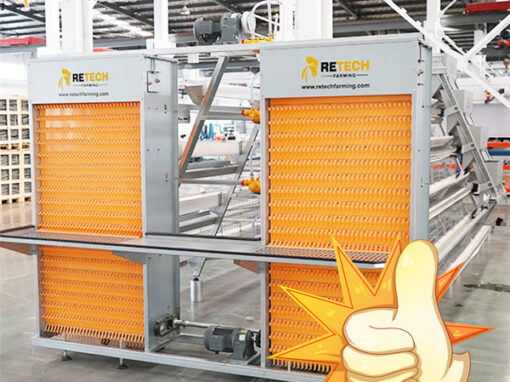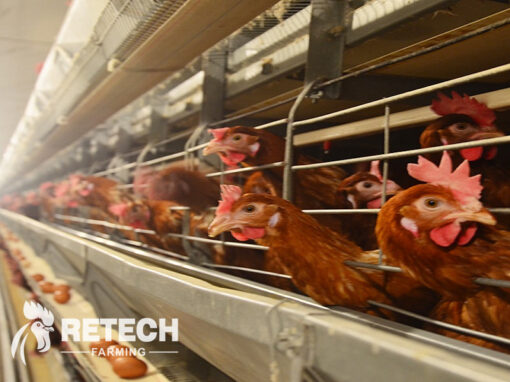White-feather breeders generally go through about 20 weeks of male and female feeding management during the brooding period. Before the breeders are mixed, they need to do the preparation of personnel and items, the selection of male roosters, and the refined management of group transfer chickens.
The following is the common chicken house structure of “two high and one low”, and shares the management points of the 21 turnover group of parental broiler breeders.
1.Preparations before the group transfer
(1)The roosters generally meet the requirements for mixing in the 21st to 23rd week. It is recommended that the 21st turnaround roosters are fed with the intermediate litter for a week, and the best effect of mixing is in the 22nd week.
(2)After 20W is immunized, let the chickens relieve stress for 3-4 days, and make preparations for the transfer of chicken baskets, vehicles and personnel.
21W can carry out group transfer work according to the chicken transfer plan.
(3)Transfer vehicles to the group to arrive at the site 2 days in advance for isolation and disinfection and to take surrounding protective measures.
(4)Before transferring chickens, hang the immune net on the litter to feed the litter in the middle of the rooster pen for about a week, and install and debug the special water line for roosters on the litter.
(5)Pay attention to weather conditions when transferring groups, clear division of labor for chicken transfer personnel, and train chicken transfer personnel to reduce stress on chicken groups.

chicken farm
2.Pick a Qualified Cock
(1)Select roosters with obvious secondary sexual characteristics (such as large, red, blushing cockscomb), straight shin, no abnormal joints, good beak closure, complete and bright feathers, especially erect neck and tail feathers, and obvious male characteristics reserve for seed.
(2)Group the roosters by weight before transferring to the group. Divide the roosters into three types: large, medium and small according to their weight. Pay attention to small hens with small roosters.
(3)Choose roosters with bright red anus, strong contractions, and thick anal sphincter.
(4)Eliminate unsuitable roosters such as underweight, crooked mouth, hunchback, blindness and crooked toes.

pullet chicken cage
3.Key points of work details when transferring to a group
(1)All work such as catching, loading and transporting chickens when transferring flocks must minimize the stress on the flocks, and prohibit the occurrence of human-caused disability and death of chickens.
(2)When loading chickens, first turn off the lights at the place where the chickens are loaded to keep the chickens in a quiet state.
(3)When catching chickens, you must grab both wings and one hand. When loading the basket, put the chicken head first, and then put it in gently and gradually according to the free space in the basket, and do not squeeze it hard.
(4)The number of chickens in each basket must be accurate. The lids of the installed chicken baskets must be tightly closed to prevent chickens from running out. They should be neatly stacked on the side of the scaffolding.
(5)When lifting the basket and loading the car, it is necessary to grasp it gently and lay it flat to avoid falling and missing.
(6)Check the protective bag at the bottom of the chicken basket. If it falls, it should be fastened in time to prevent chicken feet from being injured.
(7)Do a good job in the inventory of the number of male and female hens transferred to the house to ensure that the number of chickens is accurate and facilitates the control of the amount of feed after the transfer.
(8)Suspend group transfer when encountering extreme weather such as high temperature (>28-30℃), low temperature (<0℃), rain, snow and strong wind.


